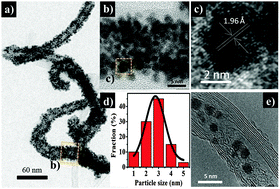Dry plasma synthesis of a MWNT–Pt nanohybrid as an efficient and low-cost counter electrode material for dye-sensitized solar cells†
Abstract
Dry plasma

* Corresponding authors
a
Department of Chemical Engineering, Chungnam National University, 220 Gung-Dong, Yuseong-Gu, Daejoen 305-764, Korea
E-mail:
hchoi@cnu.ac.kr
Fax: +82-42-822-8995
Tel: +82-42-821-5689
Dry plasma

 Please wait while we load your content...
Something went wrong. Try again?
Please wait while we load your content...
Something went wrong. Try again?
V. Dao and H. Choi, Chem. Commun., 2013, 49, 8910 DOI: 10.1039/C3CC42151A
To request permission to reproduce material from this article, please go to the Copyright Clearance Center request page.
If you are an author contributing to an RSC publication, you do not need to request permission provided correct acknowledgement is given.
If you are the author of this article, you do not need to request permission to reproduce figures and diagrams provided correct acknowledgement is given. If you want to reproduce the whole article in a third-party publication (excluding your thesis/dissertation for which permission is not required) please go to the Copyright Clearance Center request page.
Read more about how to correctly acknowledge RSC content.
 Fetching data from CrossRef.
Fetching data from CrossRef.
This may take some time to load.
Loading related content
